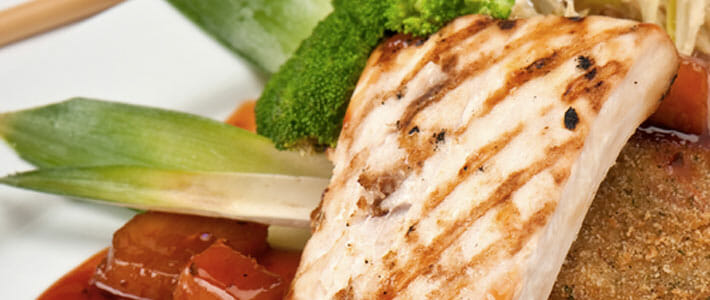Mahi mahi
Mahi Mahi may grow up to 50 pounds although market size averages between 10-20 pounds. This species is green along the dorsal surface and bright yellow along the ventral surface. Cooked meat is white.
-
3.5 oz (100g) raw edible portion
-
Calories 89
-
Calories from Fat 8
-
Total Fat 0.9g/1%
-
Saturated Fat 10.3g
-
Cholesterol 86mg/29%
-
Sodium 128mg/5%
-
Carbohydrates 0g
-
Protein 18.9g
-
Potassium 370mg
Harvest Method
Most Mahi Mahi are caught by longliners while a small amount are harvested by gillnetters.
Harvest Season
Mahi mahi is available from Costa Rica from October to February.
Appearance
This species is green along the dorsal surface and bright yellow along the ventral surface. Cooked meat is white.
Flavor
Relatively mild, yet sweet, juicy and firm. When dark portions are removed, the taste is milder.
Texture
Firm with large, moist flake.
Alternatives
An alternative to mahi mahi is wahoo.
Source
Mahi mahi is predominantly found in tropical and subtropical waters around the world. Japan and Taiwan are major producers of frozen mahi. The US and Latin America are primary suppliers of fresh mahi to the US market.
Preparation
Mahi Mahi is best when it is baked, broiled, blackened, sautéed, or grilled.
Market Segment
Mahi Mahi is appropriate for casual dining, fine dining, hotels, and resort/clubs.
